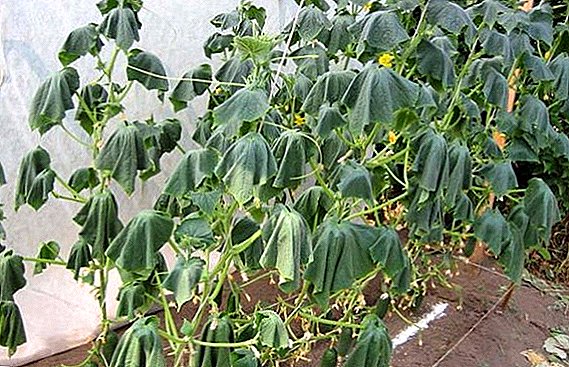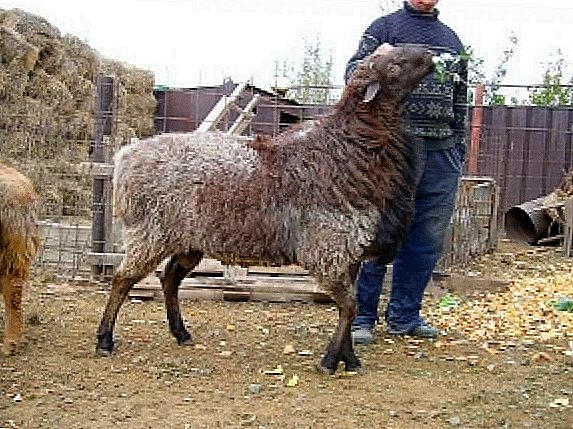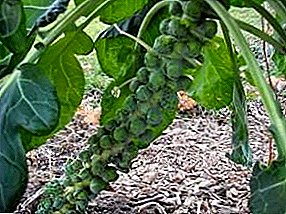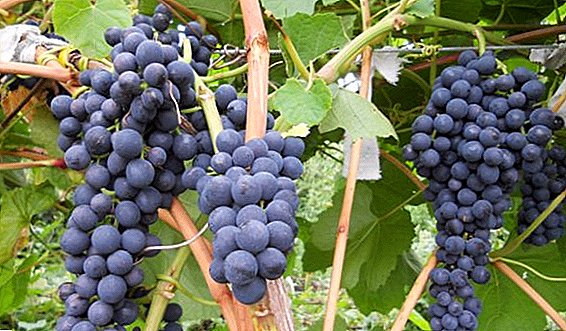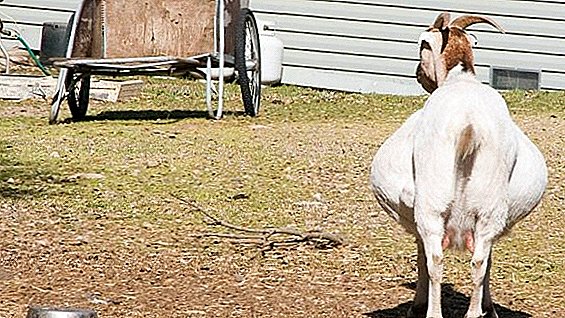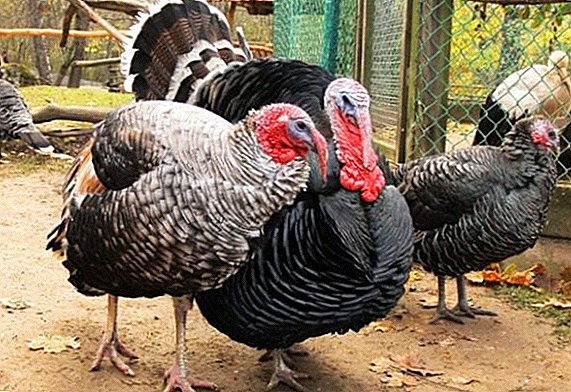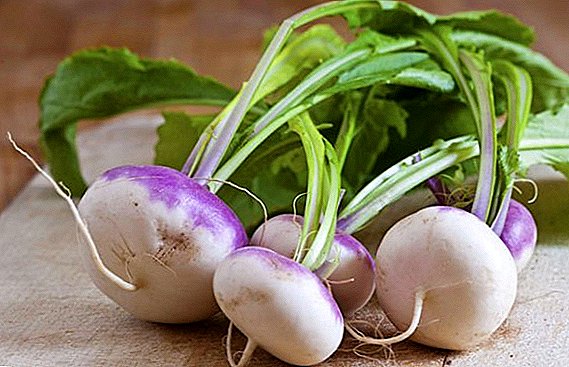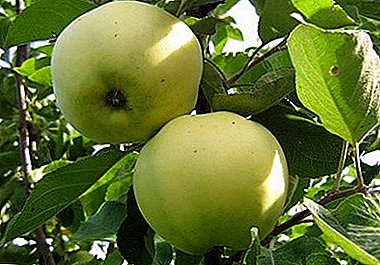
Getting sugar from sugar beet in the factory and at home. Dispel common misconception. Many people think that cane sugar is one thing, and beet sugar is another.
In fact, there is no difference between cane and beet sugar. Refined refined sugar is common sucrose, whatever its origin.
This article describes in detail how sugar is made in factories, how much it is obtained from 1 ton of beets, as well as how to make a natural product at home.
What varieties of root vegetables make a sweet product?
Beets are known to people for a long time - the first mentions of this vegetable culture go back to the second millennium BC. Since then, breeders displayed many of its varieties. There are among them leafy forms, for example - chard, most of them are root vegetables.
Modern varieties and hybrids of sugar beet contain up to 18% sugar. The best of them - Crystal, Manege, Nesvizhsky, etc. How exactly sugar is extracted from them - we will tell further.
Technology and equipment at the sugar factory
Let us briefly describe how, on the basis of the root crop, sugar is produced at special plants (learn how sugar beet is used and what is produced during its processing, here). Production at the plant takes place in several technological stages.
- Preparatory stage (cleaning and washing line). In beets, brought directly from the field or from the storehouse, stones, fragments, pieces of metal can be caught. This is dangerous for equipment. Beets can just be dirty.
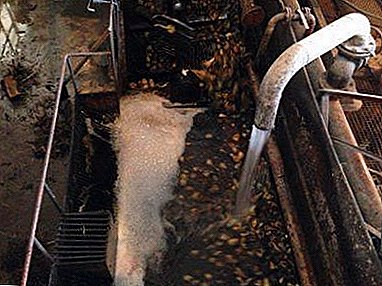 In order to avoid the loss of sugar when washing, the water temperature is controlled - it should not be more than 18 degrees. After washing, the beets are rinsed with chlorinated water at the rate of 10-15 kg of bleach per 100 tons of beets. Then the beets are served on the conveyor. There it is blown with a strong jet of air. This removes the remaining water and adhering light impurities.
In order to avoid the loss of sugar when washing, the water temperature is controlled - it should not be more than 18 degrees. After washing, the beets are rinsed with chlorinated water at the rate of 10-15 kg of bleach per 100 tons of beets. Then the beets are served on the conveyor. There it is blown with a strong jet of air. This removes the remaining water and adhering light impurities.Equipment:
- hydrotransporters (simultaneously with the filing of the beet is washed from dirt);
- sand traps, stone traps, bot-traps;
- water traps;
- washers.
- Shredding. How do they do it? Prepared sugar beets are weighed and fed to the storage bin. From here it comes under its own weight for grinding to centrifugal, drum or disc beet cutters. The width of the resulting chips is in the range of 4-6, and the thickness - 1.2-1.5 millimeters.
Equipment:
- conveyor with magnetic separator;
- beet cutter;
- Libra;
- Diffusion. On diffusion plants, the main process occurs - leaching of sugar from the ground material. Chips are treated with hot water and put sugar and other soluble substances into the solution. This process occurs at a temperature of about 70-80 degrees in a weakly acidic environment.
The medium rich in sugars is a fertile medium for the development of microorganisms. This leads to damage to the product, and to more dangerous consequences - for example, possible explosions. Therefore, in the process of diffusion, formalin solution is periodically added to the apparatus.
The final concentration of its low - 0.02% of the total mass of the product, but sufficient to suppress the active microflora. The product that is obtained at this stage is diffusion juice. It is a turbid liquid that quickly darkens in air. It contains a large amount of pulp.
The pulp is separated on the head masses. The second product is beet pulp. It is pressed and either sent directly to livestock feed or dried.
 Equipment:
Equipment:- diffusion installation (screw or rotary);
- pulp dryer
- Purification of Diffusion Juice. Juice, which is obtained after diffusion, is a complex mixture of a variety of soluble organic substances of the most diverse nature. To clear the juice from these impurities, the process of defecation is carried out.
The process with this unappetizing name is carried out in two stages. It comes down to processing the juice with lime (lime milk). The reaction of the solution in this case reaches pH values of 12.2 - 12.4, that is, the solution becomes alkaline.
At the same time organic acids are neutralized, proteins precipitate. Other undesirable impurities also react. The reaction products either precipitate immediately, or are removed in the next stage - the saturation stage. The term "carbonation" refers to the well-known process of "carbonation", that is, the saturation of the solution with carbon dioxide. This forms a fine suspension of calcium carbonate (conventional chalk), which absorbs coloring impurities.
Then the solution is filtered and again saturized. Before this, if necessary, sometimes repeated defecation is performed. Next, the resulting clear, but still colored solution is treated with sulfur dioxide (sulfur dioxide). This process is called sulfitization. This decreases the alkaline reaction of the solution and its discoloration occurs. Syrup viscosity also decreases.
Equipment:
- defecation apparatus;
- filter with heating device;
- saturator;
- sulfitator;
- sump
- Thickening and crystallization. The juice obtained after sulfitation is a common unsaturated sucrose solution. If you thicken the solution to a saturated state, then in it, as is known from the school physics course, the crystallization process will begin.
The resulting crystals will precipitate. This is what happens in vacuum machines. There, the solution, previously evaporated to a state close to saturated, begins to boil under reduced pressure, and thickens to a supersaturated state. The process of mass crystallization begins.
The precipitated sugar crystals are separated in centrifuges and carried out through several stages of final processing. There they are clarified and turned into familiar, well-known, granulated sugar.Equipment:
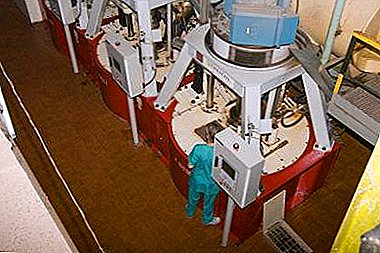 vacuum apparatus;
vacuum apparatus;- centrifuge;
- evaporator units with a hub.
The yield of sugar from 1 ton of root vegetables after processing is approximately 100-150 kg. The spread of indicators depends not least on the agrotechnology of sugar beet cultivation and weather conditions in the current year (more about where the beets grow, what kind of climate and the soil "likes", read here).
Factory measure of production efficiency is the coefficient of extraction of sugar. It shows the ratio of the mass of sucrose in the finished product (granulated sugar) to the mass of sucrose in the feedstock. Usually it is about 80%.
How to get the product at home?
Let's say right away that it is unlikely to cook the usual refined sugar at home. But sugar syrup is easy to prepare. It will be a real natural product, made by hand. Equipment for this suits the most uncomplicated.
Would need:
- any amount of sugar beet;
- enamelware (pans, pots);
- meat grinder, knife, wooden spatula;
- gauze or other filter cloth.
How to make homemade sugar:
- Beets to sort, clean from the roots and spoiled areas. Do not peel the skin!
- Rinse.
- In general, put in a pot of boiling water and cook for an hour.
- Drain the water. Let cool slightly and remove peels from warm beets.
- Grind with a meat grinder or a knife, which is preferable. Chopped plates should be no thicker than 1 mm.
- Place the crushed beets in a canvas bag and lay them under a press. Place a basin for running juice. If the press is not, you can squeeze the juice and manually, twisting the bag, as when pressing clothes.
- After the first pressing, pour hot water (not boiling water) in a volume approximately equal to half the volume of the beets, let it stand. Throw the beets on a sieve, let the liquid flow into a bowl with the juice pressed before. Thick re-squeeze there.
- The resulting juice is heated to 70-80 degrees and filtered through double gauze.
- The filtered juice to evaporate on the stove to the desired thickness. In this case, it is advisable to use the dishes wide and flat, enameled or tinned.
- Properly prepared syrup has the consistency of liquid honey. It is stored, like honey, for a very long time.
The syrup obtained during evaporation must be constantly stirred with a wooden spatula - it burns easily.
About 1 kg of syrup is produced from 5 kilograms of sugar beet, or, in terms of, 600 grams of pure sugar.
Getting solid sugar
Syrup must be carefully boiled down as sugar is boiled down to make homemade lollipops. Boiled syrup poured into flat metal forms. Put in a cold place. There, the syrup cools quickly and crystallizes. Then it remains only to remove from the form and split into pieces of the desired size.


 In order to avoid the loss of sugar when washing, the water temperature is controlled - it should not be more than 18 degrees. After washing, the beets are rinsed with chlorinated water at the rate of 10-15 kg of bleach per 100 tons of beets. Then the beets are served on the conveyor. There it is blown with a strong jet of air. This removes the remaining water and adhering light impurities.
In order to avoid the loss of sugar when washing, the water temperature is controlled - it should not be more than 18 degrees. After washing, the beets are rinsed with chlorinated water at the rate of 10-15 kg of bleach per 100 tons of beets. Then the beets are served on the conveyor. There it is blown with a strong jet of air. This removes the remaining water and adhering light impurities. Equipment:
Equipment: vacuum apparatus;
vacuum apparatus;